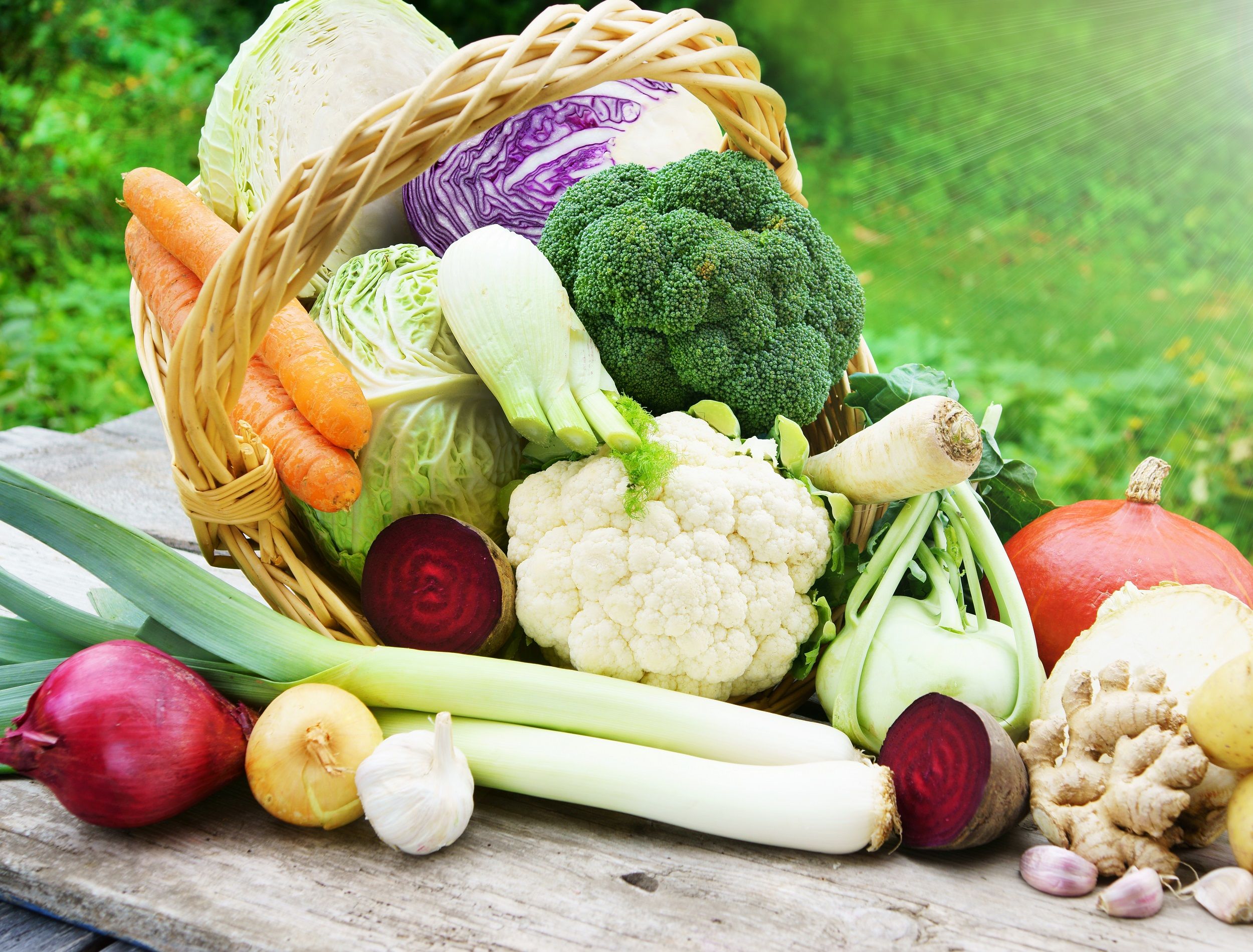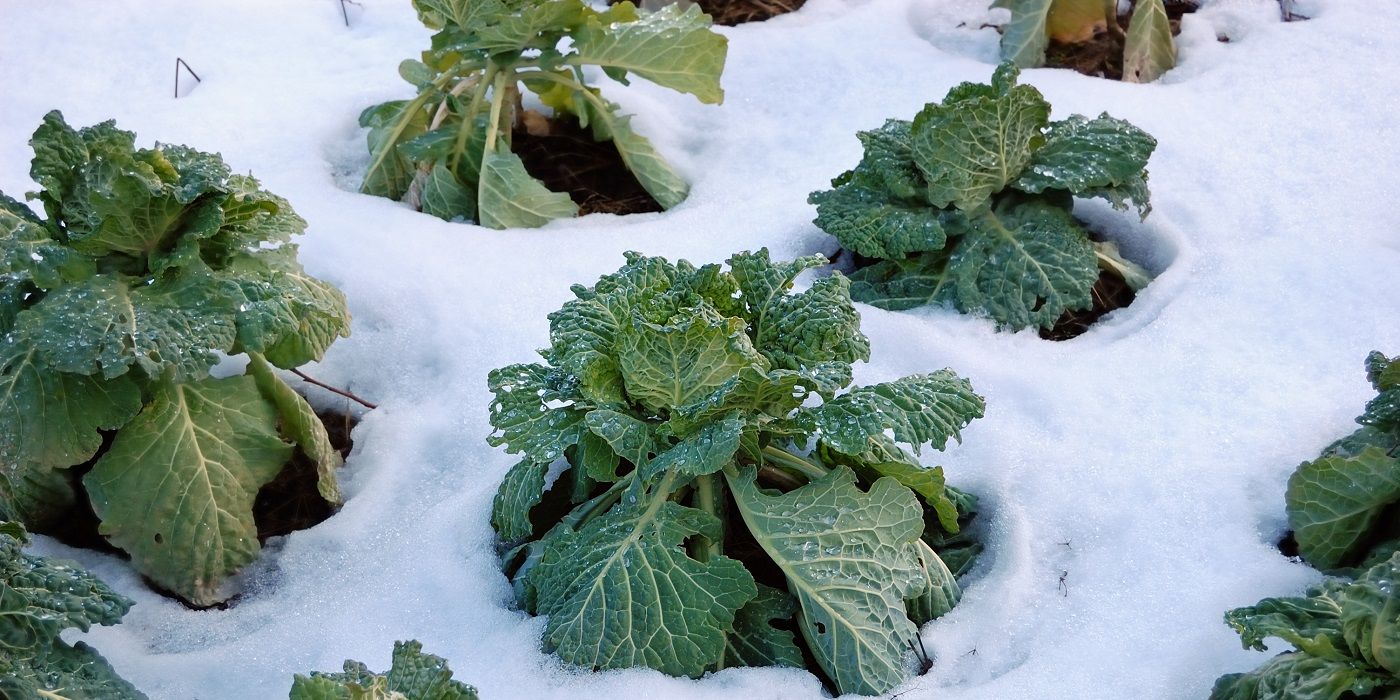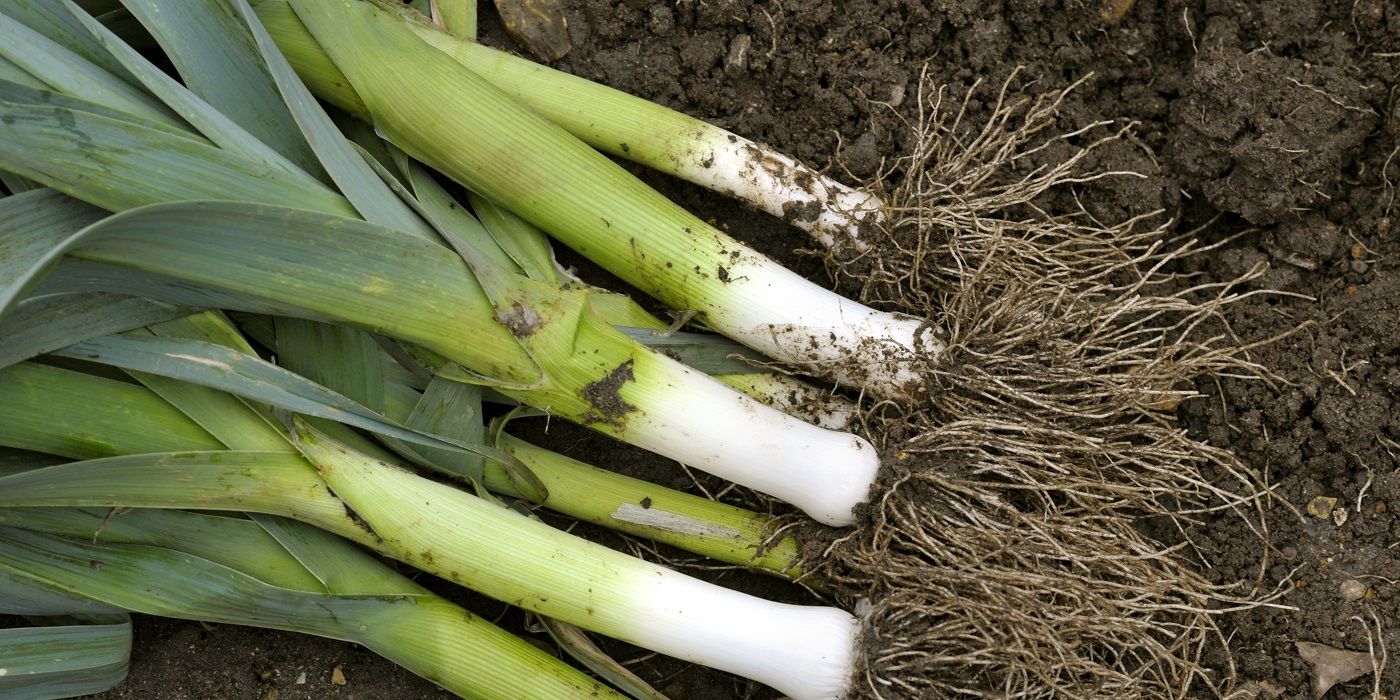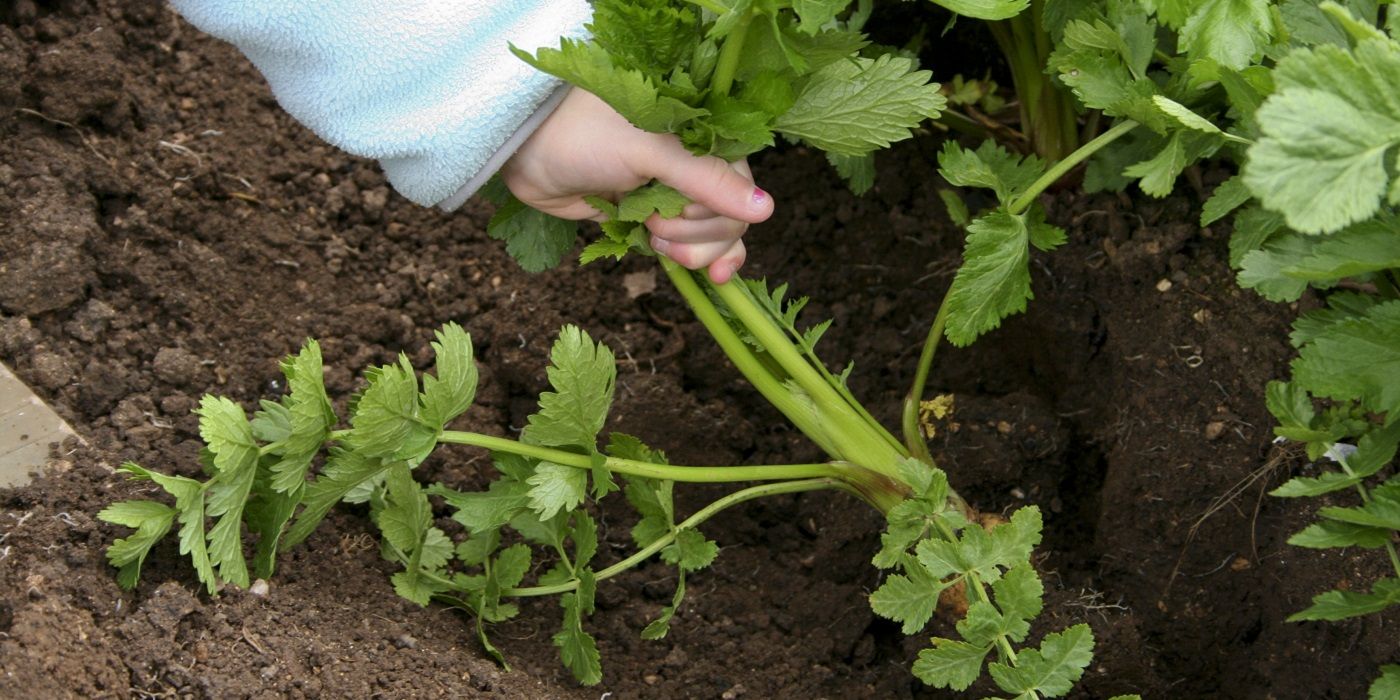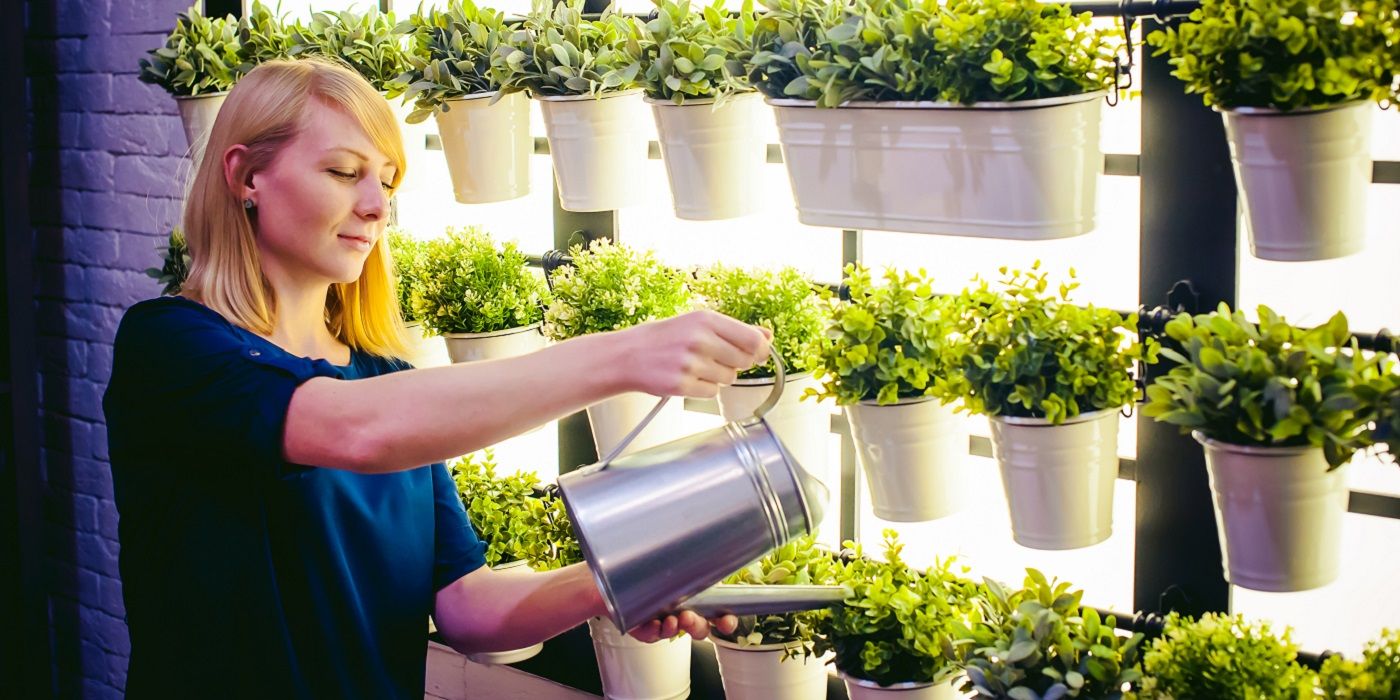Key Takeaways
- Grow vegetables outside during winter by choosing cold-tolerant varieties and protecting them from frost.
- Consider building a greenhouse, using frost cloths, or building raised garden beds with covers for protection.
- Pay attention to germinating seeds, avoid overwatering, minimize fertilizer, and harvest regularly throughout winter.
Growing vegetables during the fall and winter seasons may seem impossible. Many gardeners simply cover their plots against frost and wait until spring arrives to start gardening again. But you can grow vegetables outside during the winter with excellent results! You just need to choose the right vegetables to grow.
If you live in an area that experiences cold winters, take a few easy steps to start growing vegetables in winter, even during the harshest weather.
What are the Best Vegetables to Grow in Winter?
Choose the right plants for your winter garden
When it comes down to it, winter gardening is all about paying attention. If you're used to only gardening for three seasons a year, you'll have to be extra diligent during the winter to ensure your plants are doing well. All it takes is a little know-how and preparation.
Before you begin building a greenhouse or other structures for your plants, consider which vegetables you want to grow. Many vegetables do quite well in winter! The key is to plant only very hardy vegetables that are tolerant of cold. Lots of delicious vegetables can be germinated and planted shortly before or during autumn and harvested during winter.
|
Peas |
Pisum sativum |
Grow peas in full to partial sunlight |
Peas prefer to be planted when the weather is cold |
|
Beta vulgaris subsp. vulgaris |
Grow in full sun to partial shade when planted in well-drained, nutrient-rich soil |
Beets are frost-resistant |
|
|
Shallots |
Allium cepa aggregatum |
Grow in full sunlight with well-drained soil |
|
|
Garlic |
Allium sativum |
Grow garlic where it will receive a lot of sun |
|
|
Radishes |
Raphanus sativus |
Give radishes well-drained, nutrient-rich soil and grow them in full sun to partial shade |
Radishes taste better when grown at cold temperatures! |
|
Turnips |
Brassica rapa |
Plant turnips in a spot with full sunlight |
Turnips are quick-growing plants; the greens are edible 30 days after initial planting |
|
Parsnips |
Pastinaca sativa |
Parsnips want to receive partial to full sun and well-drained soil |
|
|
Onions |
Allium cepa |
Give onions as much sunlight as possible |
|
|
Broad beans |
Vicia faba |
Plant broad beans in full to partial sunlight |
Broad beans are also known as fava beans |
How to Grow Vegetables in Winter
Protect germinating, growing, future plants
When you've picked cold-tolerant vegetables to plant, it's time to consider how these plants will be adequately protected from frost. The most important thing to remember during this process is that while cold-tolerant veggies can survive cold temperatures, it's vital they don't actually freeze.
There are a number of things you can do to prevent freezing for your plants.
Build a Greenhouse to Keep Plants Warm
Greenhouses are a tried-and-true tool for growing plants during winter. While they can be a little bit costly to build or buy, greenhouses provide an excellent place to grow vegetables. Make sure you build your shelter before the first frost hits in your area.
Use Frost Cloths to Protect Against Cold
Freeze protection blankets can be used to protect your vegetables from frost and can also extend your autumn harvest season. If you're planting your vegetables in a raised bed or otherwise "non-traditional" garden bed format, frost cloths are an excellent option to try.
Try Using Polytunnels to Create Warmth
Similar to greenhouses, polytunnels are circular metal structures that are covered in tight plastic to protect plants. They look similar to a camping tent.
Design Raised Garden Beds With Lid Coverings
If you have raised garden beds or plan on building some, add lids. Depending on how cold your winters are, these covers can be made of mesh, thin plastic, thick plastic, or wire. Raised garden beds can be relatively easy to make and don't cost a lot in terms of supplies.
Make DIY Straw Bale Cold Frames
If you have access to straw bales, you can easily DIY a makeshift cold frame with them! Simply surround your garden with straw bales so that the entire area is completely bordered by bales. Use additional support bales as needed in the garden and place old windows across them to give the garden a warm, safe environment that is protected from the elements and warmed by the sun shining through the glass.
Use Mulch for Root Vegetables
Root vegetables are quite hardy, but their roots can be susceptible to cold soil even if they're already established. To keep your soil from freezing, apply a thick layer of mulch (around 1 to 2 feet) on top of your root vegetables. Common types of mulch to use for this include leaves, straw, or bark.
Cover the mulch with a sheet to insulate the soil and vegetables.
You can also use a combination of options for some extra protection. Polytunnels and frost cloths work great together.
Germinating Seeds in Winter
Seeds require a particular amount of heat to germinate. Because of this, it is wise to germinate your seeds inside before planting them in autumn.
Germinate seeds next to a sunny window in a warm room. If your zone's fall temperatures are a bit too cold and your windows are already frosty, consider investing in a grow light. Some vegetables can be germinated outside in a greenhouse, but unless your greenhouse is heated, it may be better to play it safe and germinate inside.
Seeds are ready to be planted outside when they sprout, but ensure that your planting day is a warmer one.
Don't Overwater Your Plants
Be cautious not to overwater winter vegetables. Your plants will get a lot of moisture from the soil as rain and snow penetrate the soil outside your structure. There is usually less sunlight during the wintertime, so soil won't dry out as quickly as it will in summer.
You shouldn't stop watering your plants, though. Check your veggies regularly and if the soil looks dry, give them a bit of water. If you have highly frosty winters in your area, generously water your plants in autumn and they should receive enough moisture through winter.
Don't Be Afraid of Fertilizer
All plants can benefit from a bit of fertilizer, including winter vegetables. Apply your fertilizer of choice once when you're planting your seedlings and don't apply any more for the rest of winter. Popular winter vegetable fertilizers include bone and cottonseed meal.
Harvest Through the Winter Months
Pick vegetables and greens as they mature to enjoy fresh food all season
Vegetables can be a bit tricky when it comes to harvesting. The right time to harvest your vegetables depends on their variety and when precisely you planted them. Check your vegetables regularly throughout the winter to check their growth and harvest when they mature.
If you're growing leafy greens, harvest them when the leaves are small or medium-sized and a bit soft. If they grow too large, they may come out bitter. However, greens grown in winter that are harvested when small end up very sweet and flavorful!
Brassicas like mustard, broccoli, and turnips can take up to 14 weeks to fully mature. Don't be disappointed if they don't reach their ideal size during winter.
Consider Growing Your Vegetables Indoors
Indoor vegetable gardening eliminates a lot of winter worries
Greenhouses can be expensive, and some people just don't have the outdoor space for a garden. You can definitely grow winter vegetables inside if they are kept in the right conditions and have access to a grow light. Some varieties that do very well indoors from seed to harvest include carrots, garlic, onions, and many types of herbs.
During very cold winters, most plants won't actually grow. They will often stay dormant until the outside temperatures warm up and direct sunlight increases. Don't worry if you do not see a ton of results, especially if you aren't using a heated greenhouse. When there are warmer days during the upcoming winter season (above freezing), open up your bed lids or air out your greenhouse to let the air circulate a bit and to let some sunlight in. You might want to water your plants these days as well if the soil is dry. Only do this for a few hours and aim to do it around noon.
Invest in a good protective structure, be sparing with your watering, and let your garden breathe during warmer days. The process really isn't so tough to master, and you'll get to enjoy some seriously tasty winter vegetables in the coming season. You may just be surprised by the harvest you get in winter!

